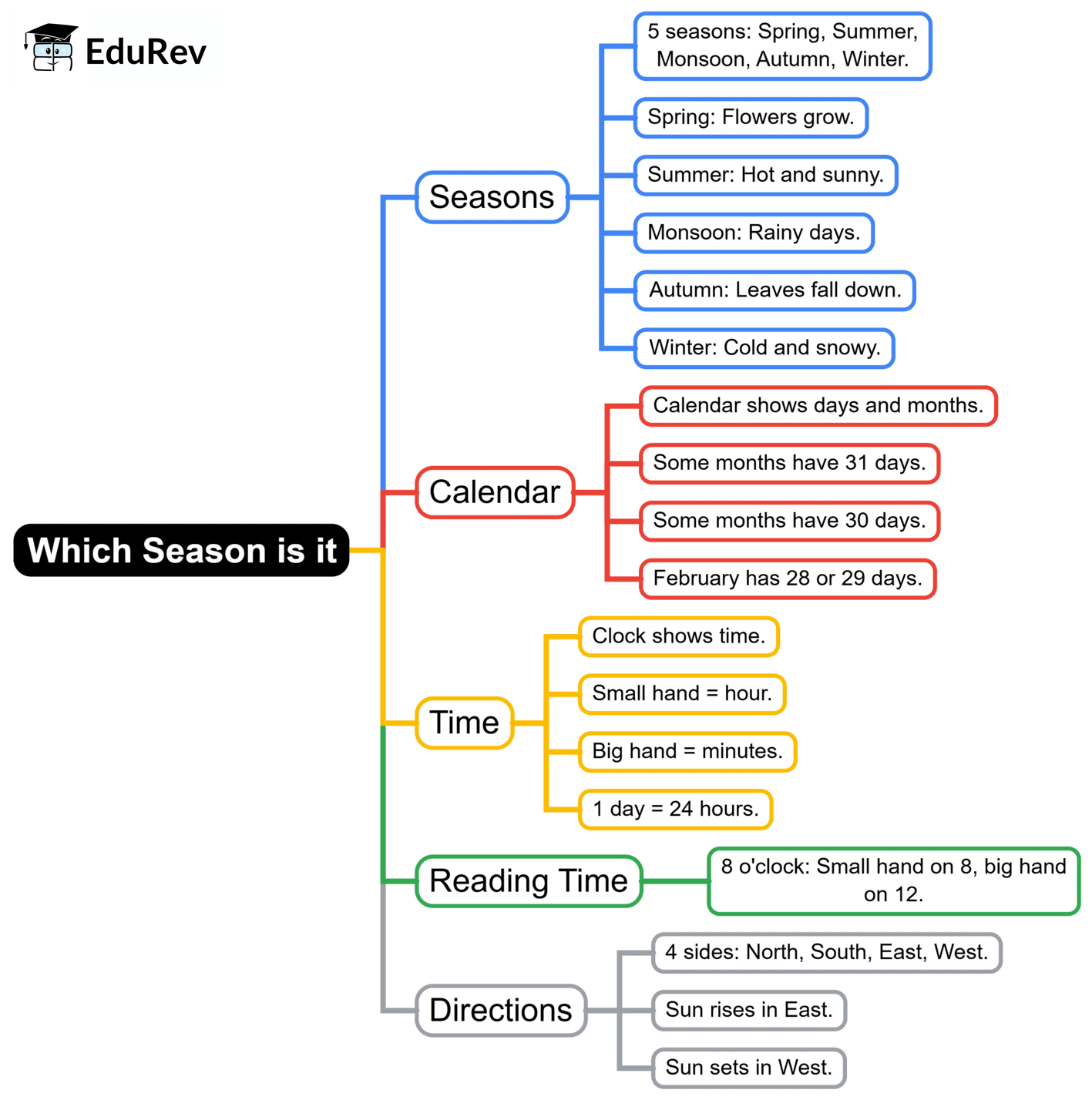Class 2 Exam > Class 2 Notes > Mathematics for Class 2 (Joyful-Mathematics) > Mind Map: Which Season is it?
Mind Map: Which Season is it? | Mathematics for Class 2 (Joyful-Mathematics) PDF Download

The document Mind Map: Which Season is it? | Mathematics for Class 2 (Joyful-Mathematics) is a part of the Class 2 Course Mathematics for Class 2 (Joyful-Mathematics).
All you need of Class 2 at this link: Class 2
|
28 videos|262 docs|22 tests
|
FAQs on Mind Map: Which Season is it? - Mathematics for Class 2 (Joyful-Mathematics)
| 1. What are the four seasons, and how are they defined? |  |
Ans.The four seasons are spring, summer, autumn (or fall), and winter. They are defined by changes in weather patterns, daylight hours, and temperatures that occur due to the tilt of the Earth's axis as it orbits the sun. Spring is characterized by blooming flowers and warmer temperatures, summer is known for hot weather and longer days, autumn features falling leaves and cooler temperatures, and winter is marked by cold weather and shorter days.
| 2. How do the seasons affect the environment and wildlife? |  |
Ans.The seasons significantly impact the environment and wildlife. In spring, many animals emerge from hibernation, and plants begin to grow. Summer often sees increased animal activity and plant growth due to warmth and sunlight. In autumn, many animals prepare for winter by gathering food, and trees shed their leaves. Winter can lead to dormancy in some plants and hibernation in animals, as many species adapt to survive the cold weather and reduced food availability.
| 3. What activities are typically associated with each season? |  |
Ans. Each season has its own set of activities. In spring, people often engage in gardening, cleaning, and outdoor sports as the weather warms up. Summer is a time for vacations, swimming, and outdoor festivals. Autumn is associated with harvest activities, Halloween celebrations, and enjoying the changing foliage. Winter activities often include skiing, snowboarding, and holiday celebrations.
| 4. How do different cultures celebrate the changing of seasons? |  |
Ans. Different cultures have unique ways of celebrating the changing of seasons. For example, many cultures celebrate spring with festivals that honor renewal and growth, such as Easter or Holi. Summer may be marked by solstice celebrations, like Midsummer in various cultures. Autumn often features harvest festivals, such as Thanksgiving in North America or the Moon Festival in China. Winter celebrations can include Christmas, Hanukkah, and New Year festivities, which often focus on themes of light and warmth during the cold months.
| 5. Why is it important to understand the seasons and their cycles? |  |
Ans.Understanding the seasons and their cycles is important for several reasons. It helps individuals plan agricultural activities, as different crops grow best in specific seasons. Awareness of seasonal changes also impacts clothing choices, travel plans, and recreational activities. Additionally, understanding the seasons can enhance appreciation for nature and the environment, fostering a deeper connection to the world around us.
Related Searches




















